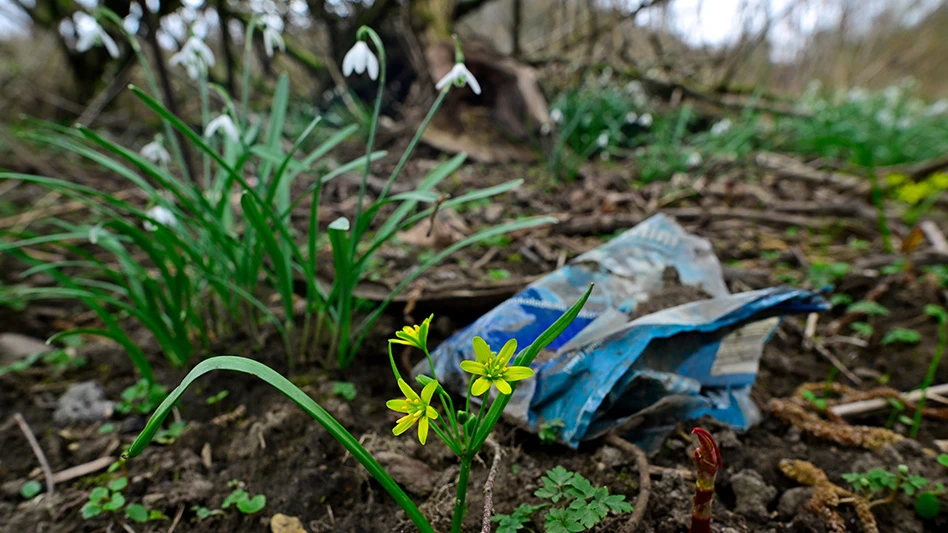 With 2010 winding down in most sales departments, except for late fall and Christmas, this is a good opportunity to look back and glean lessons as retailers prepare for 2011. Of course, that’s easy for me to say as the business consultant. Those who own or work in garden retail might say something like, “What happened?!”
With 2010 winding down in most sales departments, except for late fall and Christmas, this is a good opportunity to look back and glean lessons as retailers prepare for 2011. Of course, that’s easy for me to say as the business consultant. Those who own or work in garden retail might say something like, “What happened?!”
As the numbers fall into place for the first nine months of the year (which for most centers means the bulk of the year’s business), the signs are not good for 2010. Sure, the economy is down and the weather was poor-to-bad in most areas, but we have had other years when unemployment was higher, yet garden centers still did OK.
Malaise Days
If we take a really close look, however, we see that many employees are working shorter hours, or no overtime, and they know someone who just lost a job or benefits —or their homes. There is a feeling of malaise in the country. While outdoor-living spending has definitely improved over 2009, most centers are not yet back to 2006-2008 levels with green-goods sales. With far fewer houses changing hands there is much less landscaping being undertaken. It’s no wonder tree and shrub growers are having a hard time.
Although it is dangerous to generalize in such a big country, most areas reported that both average sale per customer and customer count are down this year—not a good combination. In some cases actual unit volumes of plants and some hard goods sold are up, but lowering prices to move products and liberate cash from inventory meant that some centers worked harder for less margin dollars.
So, What Happened?
What happened, indeed! Going into the year, the financial crisis had at least bottomed out. Fewer banks were closing their doors, the economy grew faster than expected in the first few months, and Wall Street was acting very bullish. Garden centers started with high hopes but more cautious inventories than 2009.
Across the country, this year started off like a Japanese bullet train—early and fast. Most regions reported a trading pattern at least three weeks earlier than usual. Again, the public was flocking to seminars and classes, veggies were still hot and surprising amounts of early perennials and flowering bushes were selling. Reports from vendors and the big-box stores showed record sales of early garden supplies such as lawn food, and the big-box stores were congratulating themselves on their strategic planning and vision. Some independent retailers reported sales in March and April over 60 percent up on 2009, while hoping that this was extra sales volume—not just May-money spent in April.
Temporary garden center-itus was a noticeable condition this year, too, as entrepreneurs, hardware stores and seasoned veterans all put some serious money into short-season plant centers on various parking lots around good demographic locations.
And then it all went, as they say in the U.K., “pear shaped.” Cold, wet weather hit the West, more wet weather splashed the East, and May went out like a lamb. Virtually nobody shopped after Mother’s Day or Memorial Day. As one owner told me, “We were all dressed up in our finest, but no one showed up to the party.”
Well, as demographers have been warning us for years, we discovered that those days are over. One of my clients put it this way: “When the weather got hot, the younger customers decided that gardening wasn’t cool anymore.” Wow!
What can we take away from 2010? I believe this year was impacted by a combination of events and factors. Externally, the national news became less positive with millions of home loans still “underwater,” with sluggish retail sales, with employment not rebounding, with politics as usual in Washington and then finally with that BP (Beyond Pollution) oil spill on television every day adding more malaise.
Something that many overlooked was the veggie-rebound effect. Following the runaway demand for “homegrown” in 2009, every retailer and his brother from drug stores to gas stations either increased their veggie and color offers or carried them for the first time as a traffic driver.
Unfortunately, the media had other ideas this year, shrugging veggies off as the story of 2009 and failing to feature homegrown as a trend. Retailers were left with a lot of very perishable plants that had to be discounted, and that, together with the economy, set the tone for the rest of the year.
Throughout the summer, price and deals became the only thing to which the public seemed to respond. The big-box stores, using their buying power and market surpluses to drive down their prices from suppliers, have been advertising retail prices not seen for 20 years, making it very hard for some independents to be seen as competitive. This is, of course, a short-term strategy that reduces perceived value and one that will haunt all garden retailers when the economy picks up and supplies become short, as they surely will in a couple of years.
Unpleasant as this strategy might be to independents, it is a fact of life and one that the independent winners this year learned to live with. The smart operators found their own bargains and deals from suppliers and cleverly used the concept of KV (Known Value) lines to drastically reduce their margins on a few selected lines to drive traffic. At the same time they achieved full margins on new, unusual or just gorgeous lines for which the public had little price expectation.
My margin mantra for independents this year has been, “Get it where you can and give it back where you have to.” The best garden center operators even applied this thinking down to one tiny sub-class or plant species saying, “Not all Knock Outs are ‘Known Value,’ so I am going to drive business with this one and make margin dollars with that one.”
We have clients who have recorded a 6-percent drop in sales but a 10-percent rise in gross margin dollars. The top line or sales volume number has become less of a focus than gross margin dollars. Some reduced labor significantly for the second year in a row, mostly by hiring fewer hours or fewer people, rather than reducing pay rates. The results have been better “bottom lines” or net profit than they have seen for several years.
Plants R Not Us
One of the strongest lessons learned this year, though, is that it was not a good strategy to be known as “A Planty Place,” especially if those plants were woody plants. The best performing stores I know were those that had a lot more reasons to visit than “success with plants.” Stores that sold hardware, gourmet food, footwear, bird supplies, patio, table top, home accents, jewelry and clothing also did quite well in their green-goods departments. Plants, mostly color or houseplants, were picked up as impulse lines by shoppers with non-plant agendas.
Consumers would spend $100 on table top but not see the value in three shrubs for the same price. Why? Because we have not sold plants to the customer in the way they want to buy. I believe this shows a huge opportunity. Most “planty places” have not challenged their teams to merchandise and sell plants as weekend projects or as lifestyle improvers. We still have lined up too many identical green blobs in boring black pots, when what the customer really wanted was to complete a project like hiding an ugly air conditioning unit.
It has been interesting to hear from growers that their best-selling lines were in custom, colored or branded pots—anything but black nursery “cans.”
The Tide Waits For No One
In retrospect, some operators learned, adapted and improved their businesses; some did not. No one, least of all me, can tell you what 2011 will bring, but I did see this year some very significant and permanent changes in demographics, shopping attitudes and expectations that are a valuable (if painful) lesson.
When the generous business tides of 2002 – 2007 rose in our industry, all boats floated and prospered. Now that the tide is out some companies are stuck on rocks, while other garden centers adapted to float in different water. The big question is this: Will you have your new boat ready when the tide returns?
Contributing editor Ian Baldwin offers other useful ideas in his “TLC … Think Like Customers” sales training program, available at www.ianbaldwin.com.

Explore the October 2010 Issue
Check out more from this issue and find your next story to read.
Latest from Garden Center
- Pennsylvania Horticultural Society shares top gardening trends from 2025 Philadelphia Flower Show
- California Spring Trials 2026 dates announced
- Les Evans promoted to DRAMMwater segment manager, Al Zylstra to retire
- Hoffmann Family of Companies to acquire N.G. Heimos Greenhouses
- GIE Media Horticulture Group wins five regional 2025 Azbee Awards of Excellence
- QR Zipper partners with American Floral Endowment on Sustainabloom donations
- VIDEO: How Kansas City garden centers are fostering community
- Pennsylvania Horticultural Society announces 2025 Gold Medal Plant winners





